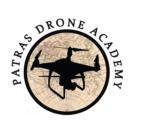Flight Operations Manual (Operations Manual)
The Operations Manual enables you to operate in the Special Category, safely and efficiently, in accordance with the new EASA & Greek civil aviation regulations. On this page you can find the basic information should at least contain the Operation Manual.
The Operation Manual should always be adapted for the area and type of operation.
The Operation Manual should contain information such as:
1. The purpose and scope of the Operations Manual with a brief description of the various sections of the documents.
2. A description of the organisation of the operated UAS such as the organisation chart and a brief description of the organisation.

3.For each function, you should describe:
a) The type of operation (VLOS/BVLOS) and associated risks.
b) The operating environment and geographic area for the intended flights. The characteristics of the area to be overflighted, its topography, obstacles, etc., and the characteristics of the airspace to be used and the environmental conditions. The definition of the required operating volume and risk reserves to deal with ground and air risks).
c) Description of the main characteristics of the technical means used, their performance and limitations, including UAS, external systems supporting the UAS operation, facilities.


d) Skills, duties and responsibilities of personnel involved in operations, such as remote operator, UA observer, visual observer (VO), operations supervisor, operations manager, technician, Training and checking compliance with applicable regulations and instructions to crew members on health, fitness for duty and fatigue, guidance to personnel on how to facilitate inspections by personnel of the competent authority.
e) Risk analysis and methods of mitigation of identified risks (description of the methodology used).
f) Maintenance instructions required to maintain the UAS in a safe condition, covering the UAS manufacturer’s instructions and maintenance requirements, if applicable.



4. Normal procedures. The UAS Operator should complete the following paragraphs taking into account the information listed below.
a) General procedures applicable to all operations.
b) Specific procedures of a single operation.
5. Emergency procedures.The UAS operator should complete the following paragraphs, taking into account the elements listed below.
a) General procedures applicable to all operations.
b) Specific procedures of a single operation.



6. Emergency procedures. The UAS operator should define procedures for dealing with emergency situations.
7. Emergency response plan (ERP) (optional).
8. Instructions, guidance, procedures and responsibilities on how to implement the security requirements and protect the UAS from unauthorised modifications, interference.
9. Guidelines for minimising nuisance and environmental impact.
10. Incident reporting procedures under Regulation (EU)
11. Record keeping procedures. Instructions for Operator LogBook and other data deemed useful for monitoring and tracking activity.
